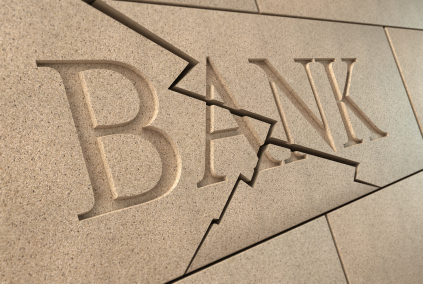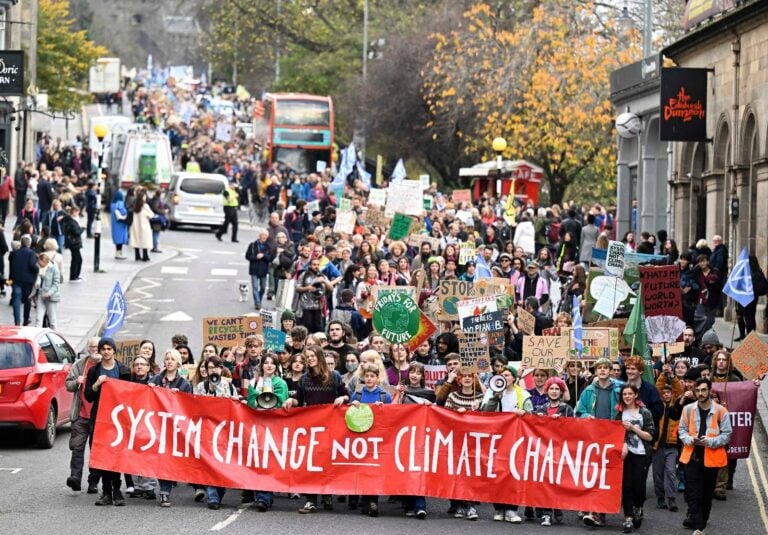
Continuing risks in the financial system at the start of 2017
by Myriam vander Stichele
The stock market indexes and derivatives markets are again showing a higher level of “exuberance” than when the financial crisis started to unfold in 2007 in the US. The financial system seems to have survived instability shocks from the Chinese financial markets in early 2016, and, later in the year, from the remaining weaknesses of the European banks, especially the threat of a potential collapse of the oldest Italian bank, Banca Monte dei Paschi di Siena and Deutsche Bank.
However, the lack of real financial reforms and the slow or weak implementation of approved, due to the enormous lobbying power of the financial sector and insufficient political will, means that many financial stability risks remain that are threatening already shaky political systems, and vice versa. Among others, the European Systemic Risk Board(opens in new window) and the IMF’s Global Financial Stability Report(opens in new window) sent clear warnings that risk taking is high while the existing risks to financial stability are underestimated.
A remaining problem is that too-big-to-fail (TBTF) banks have not been slimmed down and the risky activities have not even really been separated or split off from basic banking activities. Proposed EU reforms to do so, through a Banking Structural Reform Directive(opens in new window) , have stalled without popular protest. According to the IMF´s 2016 Global Financial Stability Report(opens in new window) , “more deep-rooted reforms and systemic management are needed, especially for European banks”. A German Economic Scientific Council warned that bank reforms are insufficient. The Financial Stability Board agreed on a 2016 list of 30 TBTF global systemically important banks (opens in new window) (G-SIBs). These financial conglomerates that could put the financial system at risk are finally getting subject to requirements for extra capital reserves (e.g. total loss-absorbing capacity (TLAC(opens in new window) )) that should avoid bail-outs with public money and discontinued critical banking functions in case the G-SIBs fail. Worse, there is still no global system in place to orderly resolve these G-SIBs in case they fail, so that many are still not excluding bail-outs with tax money or perhaps corporate money (e.g. German industry buying up the shares of Deutsche Bank) in case of a global crisis. There is also a 2016 list of nine global systemically important insurance companies (G-SIIs)(opens in new window) whose resolution frameworks still need to be operationalised(opens in new window) . A new category has joined the list of TBTF global systemically risky financial players about which warnings have been issued several times, and EU(opens in new window) and international (opens in new window) plans are under way to deal with them: “CCPs” or central counter parties , i.e. the clearing houses that take on the risks when derivatives contracts fail to be paid. At least it seems that globally active hedge funds, which use extreme speculative strategies with borrowed money, are not attracting more funds than the already huge amount of $ 3 trillion which they currently manage(opens in new window) .
The low interest rates in the US and the EU are undermining the current business models of pension funds, insurance companies and banks, because their profit margins are too low. In a particular paradox, savings banks like the German Sparkassen that were not involved in speculative business and proved to be healthy and resilient in the crisis, are now under threat. Their business model is based to a large extend on the interest rate differentials. Consequently, banks are moving more towards obtaining fees from market-based finance, whereby they are intermediaries and do not bear the risks, including through securitisation, asset management and shadow banking. The current low interest rates have encouraged worrisome risky financial strategies, concentration of some assets such as real estate leading to asset bubbles, and a high level of private and governmental debt (loans, bonds), not in the least involving corporate debt in emerging markets. When interest rates increase, as began in the US on 14 December 2016, debt repayment will become more difficult, and large money flows, already flooding the markets due to central bank supplies of cheap money (known as quantitative easing or QE), will withdraw from emerging and unstable markets. This will exacerbate the challenges to financial stability in emerging market economies(opens in new window) already rocked by low commodity prices and financial outflows. At the same, QE that needs to be considered as a subsidy to the financial sector, will continue in the Eurozone.
The low interest rates and QE have been encouraging all kind of investors, including pension funds, insurance companies and even individual savers, to take many more risks on the financial markets in order to obtain some profitability. However, as different volatile moments in 2016 have shown, profitability can very swiftly dwindle due to mistrust or a political or financial event, triggering a withdrawal of money, not in the least from investment funds. Experts and the media(opens in new window) have been warning about new investment strategies through Exchange Traded Funds (ETFs) which manage in 2016 more than $.33 trillion through passive index funds, i.e. automatically buying and selling shares according to their performance on the stock market. Only a few fund managers (BlackRock, Vanguard, State Street) dominate this market. These funds own the shares of many listed companies, meaning that they have an impact on these companies’ behaviour, the economy, job creation and even inequality.
The rise of non-bank financing and the shift to market-based finance (e.g. through stock markets, bond markets, investment funds, shadow banking, money market funds and securitisation) brings about new challenges. Regulators and supervisors do not yet have full oversight over data, let alone of the risks and how to solve them. Market-based finance is also being used for public goods such as infrastructure projects, including roads, energy grids, schools, prisons and hospitals, which are being pushed for through the G20’s new “Global Infrastructure Hub(opens in new window) ”, for example. A major problem is that market-based finance spreads the risks throughout the financial system and society, increasing inequalities (the market is not interested in the poor). Many financial instability risks also remain in China’s shadow banking and financial system, about which not all is known. BREXIT and Trump’s election might change the way in which the London and New York financial centres are regulated and are working, eventually spreading their risky strategies even wider around the world.
Political decision-makers in the G20, EU and US (Trump) agree with the financial sector lobby that further financial reforms are not needed – rather, that the opposite is true. In the EU, this has been visible in the EU opposition to the Basel Committee on Banking Supervision’s completion of bank reforms by preventing too-lax risk assessments by banks when approving loans (through its own “internal model” of risk weighing), as well as by the weak(opens in new window) EU review of bank reforms(opens in new window) . There is little agreement among the G20 on what to do, and the German presidency of the G20 is emphasising implementation and not further reforms.
In terms of financial stability, nothing has really been legislated to prevent the markets from being on shaky financial stability grounds. This can be easily disturbed by financial, political and even climate change(opens in new window) events, resulting in a wall of money being flashed to other profitable or presumably safe assets (such as bonds at 0 percent or negative interest rates), while some assets might not be easily sellable. Finally, during the last months of 2016, the efficiency and non-conditionality of central bank interventions (QE, low interest rates) were very much in question. Low economic growth is blamed for many problems, but financial and monetary policies might be at the core of the lack of demand and unequal purchasing power. At the same time, the current growth model as such is not questioned. As an example of this inconsistency, the ECB is buying up bonds from big oil companies(opens in new window) in contradiction to climate change policies. Such bonds might become stranded assets.
Who will act when the instability threatens to become a new financial crisis, or at least act to prevent another crisis from occurring?
This article was first released in the ‘EU Financial Reform’ newsletter which is published by SOMO and German NGO WEED. Go to our archive to read all EU Financial Reform Newsletters(opens in new window) or to subscribe.
Do you need more information?
-

Myriam Vander Stichele
Senior Researcher
Related news
-
Why share buybacks are bad for the planet and peoplePosted in category:Opinion
 Myriam Vander StichelePublished on:
Myriam Vander StichelePublished on: Myriam Vander Stichele
Myriam Vander Stichele -
 The Netherlands: European champion share buybackPosted in category:Long read
The Netherlands: European champion share buybackPosted in category:Long read Rodrigo FernandezPublished on:
Rodrigo FernandezPublished on: -
 The trillion-dollar threat of climate change profiteersPosted in category:Long read
The trillion-dollar threat of climate change profiteersPosted in category:Long read Myriam Vander StichelePublished on:
Myriam Vander StichelePublished on:

